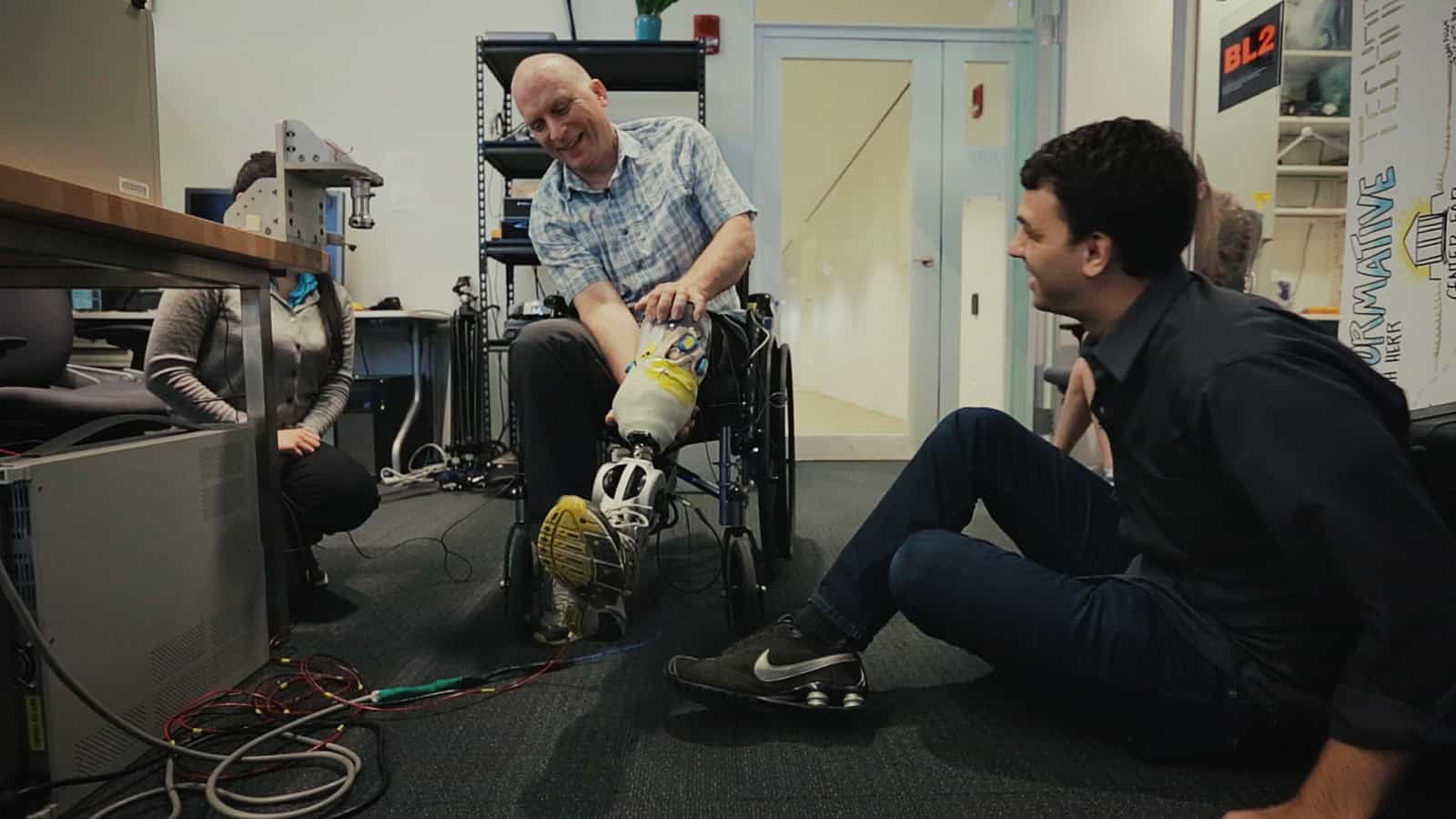
CAMBRIDGE, Mass. — For hours on end last year, Massachusetts Institute of Technology engineers ran the brain-controlled robotic limb through its paces, testing its capabilities on a series of patients and fine-tuning it like a pit crew preparing a race car for the Indy 500.
They had patients flex the prosthetic foot: toe up, toe down. Toe in, toe out. Walk up a flight of stairs, then back down. But it was after the day’s experiments, when patient Jim Ewing was seated and chatting with the team, that they made their most provocative observation: He fidgeted, pivoting the motorized ankle, unconsciously.
It wasn’t much, just a wiggle now and then, but it provided powerful evidence that the new robotic foot had become a seamless part of Ewing’s body in a way that has never been accomplished before with a prosthetic limb, the scientists reported Wednesday.
“A standard amputee, when they’re wearing their leg, doesn’t do any of that,” Dr. Matthew Carty, a Brigham and Women’s Hospital surgeon and co-author of the paper, told STAT. “But Jim, when he was sitting there talking to us, was fidgeting his bionic foot like it was his biological foot. And he wasn’t thinking about it. It was just him being him.”
The key to making the bionic like the biological was combining a surgical advance with a technological one, the researchers say. Ewing — who mangled his left foot when he fell about 50 feet from a cliff he was scaling in the Cayman Islands — was the first person to undergo an entirely new kind of amputation, pioneered by Carty and MIT professor Hugh Herr. The engineers, meanwhile, developed a prosthetic foot that would enable two-way communication, with signals traveling from Ewing’s brain to his residual lower leg and into the bionic limb, and then back again.
Herr, himself a rock climber who lost both his legs to frostbite as a teen, describes his goal as nothing short of eliminating disability. That’s still a ways off. But the research demonstrates the potential of the new system to help people with amputated legs catch themselves when they step off curbs they don’t see, or hike across uneven terrain without stumbling, said Tyler Clites, who just earned his Ph.D. from the Harvard-MIT Program in Health Sciences and Technology and was lead author of the paper published in Science Translational Medicine.
Ewing, referred to as “Subject A” in the paper, was the only patient tested who underwent the new procedure. Clites compared how he did with the robotic foot to the performance of four people who had traditional amputations. In contrast to Ewing, who described the prosthesis as “his leg,” the others reported “a distinct lack of ownership of the prosthesis, or emotion associated with controlling it,” Clites wrote.
Ewing, 54, exhibited more subtle control over the carbon-fiber-and-metal foot, which weighs about 2 kilograms — roughly the same as his natural foot did. He also automatically raised and lowered his toes while climbing or descending stairs, a reflexive behavior seen in people with intact legs but never before with a prosthetic one. “This is below the level of his consciousness,” Clites said. “It’s just happening, naturally.”
Before concluding that the new surgery is superior to the standard amputation, however, the findings must be replicated in a larger clinical trial, which is already underway.
STAT has been following the experiment for the last 15 months, collecting footage for an upcoming documentary, called “Augmented,” about Herr and his team’s ambitious project to create advanced robotic prosthetics that become one with patients.
Most crucially, the MIT and Brigham researchers were able to restore Ewing’s sense of proprioception, the ability to know — without looking — where your limbs are in space, how fast they’re moving, and with what force. It’s what allows you to touch your fingers together with your eyes closed, or to calibrate just how hard to press on the gas pedal. In short, “it is fundamental to all human movement,” Clites said in an interview.

